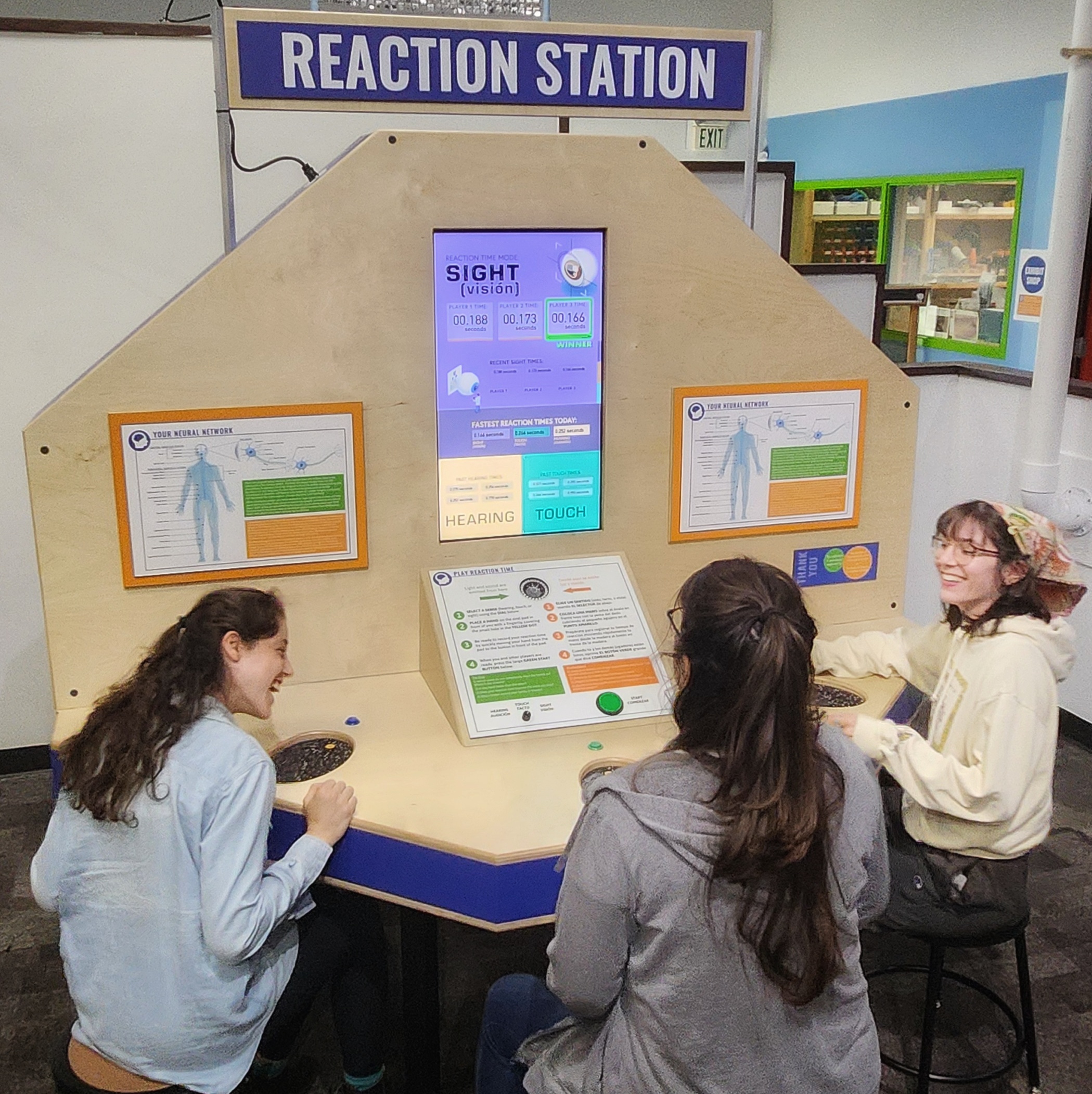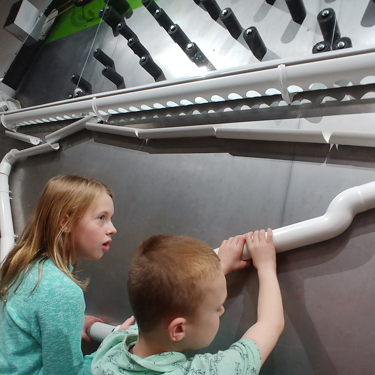Our ever-changing array of exhibits features something for everyone! Explore science including astronomy, mechanics, mathematics, earthquakes, fluid dynamics, and neuroscience. We’re introducing new exhibits often, so visit frequently to see what’s new!

Engineer structures and test how well they withstand earthquakes of various magnitudes. Learn about seismometers by jumping up and down and observing the vibrations you make on a real-time display. Watch videos about earthquake science and how best to prepare for an earthquake. Preparedness resources can be found HERE.

Move various shapes across an augmented reality flow field to see how fluids of different velocities and viscosities react.

Test how quickly you react to three senses: touch, sight, and sound. Are you faster than your friends and family? Which sense do you react the fastest to? Experience Mindball on the opposite side by trying to move a ball into your opponents goal with only your brain activity!

Investigate a life-size T-Rex skull modeled after the famous Sue fossil at the Field Museum in Chicago. Learn about the T-Rex, and mass extinctions that have occurred throughout geologic time including the current sixth mass extinction.

Learn about our solar system and beyond! Enjoy designing, building, and testing spacecrafts, using various tools to detect the invisible, and creating a livable habitat on Mars.

This highly interactive math exhibit tests your bowling skills. Are you accurate, precise, or both as you roll balls down a ramp aiming for the center row? Add a countdown timer to see what happens when you’re under the pressure of time.

This open-ended exhibit allows you to experiment with the Coriolis Effect by interacting with a different objects on a turntable.

How high can you jump? How long can you balance? How long can you hang? Three health and wellness activities test your skills against others.

Shoot balls into the air and watch them chaotically return. Can you engineer a raceway to catch and divert them?

Experiment with different turbine blade shapes, number of blades, and the pitch of the blades to create different wind turbines. Crank a handle to produce wind and see which design is more effective at harnessing wind energy.

Explore cabinets filled with biological and geological artifacts including skeletons, fossils, rocks, minerals, and meteorites. In the center of the room is a Keva Block station to let your creativity flow by designing and building various structures.

Get outside and explore the Eugene Solar System Trail – one of the first scaled solar system trails in the country!

